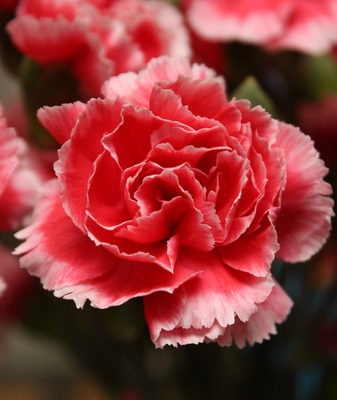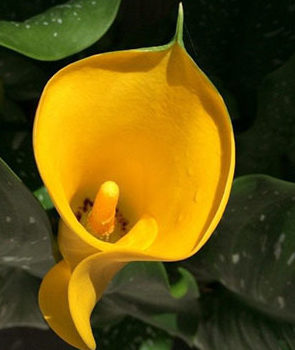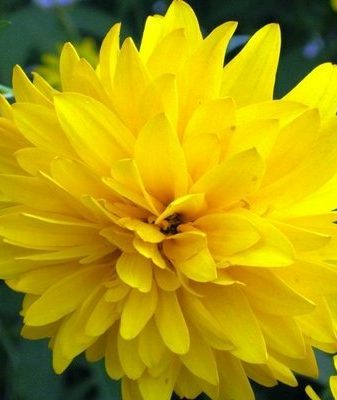Flower lumbago
Content:
Lumbago is no longer a rarity for anyone. Their gardeners adore for their velvety edges, for their beauty. However, they are not as easy to clean as they might seem. They do not tolerate transplants and are worth growing in unusual conditions. But this will not confuse gardeners, because their beauty is captivating.
Flower lumbago: description of the plant
Flower Shoot: plant video
First, let's figure out what a lumbago is. These are small herbaceous plants that grow for several years. Their sizes vary from five to forty centimeters. At first it may seem that these tiny five centimeters will be lost in your garden, but no, they are bright enough and hard to miss. Despite their small size, their root system is very strong, long and strong roots.
Shoots bloom in summer, very hardy. The shoots are always even, the greenery is not bright and not flashy. There is a peculiarity in sleep - grasses are stretching of shoots after flowering. Lumbago is loved by everyone for their huge and bright flowers that bloom to the leaves. Against the background of small leaves, these flowers seem very huge. The collection of pistils and stamens constitutes an eye, its peak comes in the spring.
Lumbago seeds ripen one month after the end of flowering. They hide in fluffy pillars. The fruits look as beautiful as the flowers. As for the timing of flowering, they bloom at different times. Some in April, others in May, some even in June. In this way, they are beneficial for your garden, as they bloom from spring to summer.
Despite their cute appearance, their healing properties, you need to remember that lumbago are poisonous plants and you need to be careful with them. When transplanting, be sure to use gloves, otherwise you can get allergies.
Lumbago grass: types and varieties
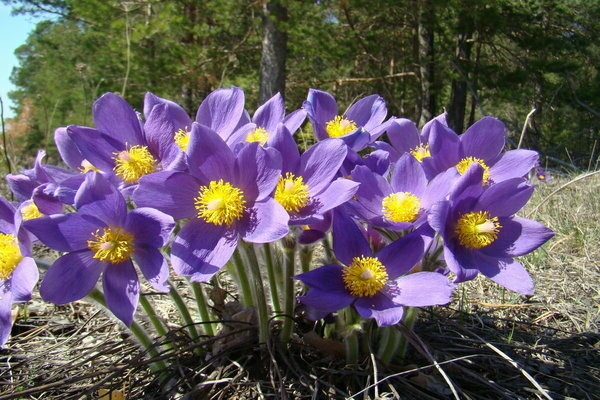
Flower lumbago: photo
Plants that are part of the genus lumbago are most often in the Red Book and are prohibited from picking, digging and doing anything. Violation of these rules is followed by liability and fines. We must protect, not harm the environment. There are forty types of lumbago in total.
However, the species that summer residents can use are three times less, namely fifteen. Despite the small number of species, it is very difficult to understand their classification. But still, any gardener will be able to distinguish lumbago from other plants, because they have a completely different appearance.
Now you will learn the most common lumbago.
Common lumbago
Shoots are medium in size, reaching only twenty centimeters. Bell-shaped flowers. As for the color, then there is a complete variety: white, purple, lilac, lilac.
Opened backache
Most varied escape. It is distinguished by a range of shades and sizes. In height, it can vary from seven to fifty centimeters. The shape of the flowers resembles hearts. The flowers are large enough and reach eight centimeters. Due to your aspiration upward, you can take a closer look at the flower. In May, the peak of flowering comes and one bush can please you with fifty pieces of flowers at once.
Spring lumbago
We are very fond of summer residents for their appearance. It reaches a height of thirty centimeters. Their shoots are curved. Its peak bloom comes in May and this miracle blooms for about four weeks. The peculiarity of these shoots is that when grown from seed, you should be able to enjoy flowering in about five years.
Yellowing lumbago
A very lush and open plant, directed upward.The flowers can be six centimeters in diameter. Their color is really yellow, dirty lemon shade. He is loved for his catchiness and unusual coloring. The plant is covered with a silvery edge.
Doubtful lumbago
Very small plants with very small flowers, reaching only 2 centimeters. Despite this, the flowers are bright and catchy, lush. The leaves are large. The peak of flowering occurs in May.
Haller's backache
Color is only one month old. Bright purple flowers, visible from any corner of your site. Plant height is about fifteen centimeters.
Lumbago golden
A very tall plant, about thirty-five centimeters. It stands out not only for its height, but also for its very bright flowers that can be seen from everywhere. Wide flowers of a golden hue bloom in June. The flowers reach six centimeters in diameter despite their height.
Ayan lumbago
Height reaches up to ten centimeters, these are very small plants. Their leaves are somewhat reminiscent of parsley. Their flowers, egg-shaped, do not bloom to the end, remain slightly closed. Inside the flower there is a golden center.
Lumbago Turchaninov
Their foliage is very bright green combined with bright purple small flowers. Downward tilted flowers look very nice in the areas. They are very petite, but very catchy.
Bell lumbago
They are very similar to ordinary bells, but there are still differences. Very miniature plants, reaching a diameter of three centimeters. Their lilac color attracts the attention of anyone passing by.
Lumbago onion
A very serious color, dark brown, covered with a silver foot like frost on top. The flowers are down. They are considered one of the most beautiful lumbago.
Lumbago Magadansky
The smallest lumbago reaches five centimeters in length. Bells of white and purple color looks very miniature on the ground.
Backache Tarao
A fairly large flower with lush flowers. White - green color will draw the attention of all passers-by. This is the most unusual type of lumbago. They have the narrowest petals.
Lumbago tatewaki
A very delicate plant, cute and bed-like color of the petals touches absolutely everyone. This plant also does not shine in height, up to twenty centimeters in length. This plant blooms in May and shimmers gently in the sun.

Flower lumbago: photo
Lumbago has the ability to quickly change and completely new varieties can arise on your site. If you plant different varieties next to each other, then due to pollination, completely new varieties can emerge next year. This is a very interesting game with varieties, you don't know what to expect and you get a pig in a poke.
Lumbago is used to decorate the edges, stairs, to decorate along the paths,
in groups on the lawns.
Flower lumbago: growing a plant
It is not so easy to grow lumbago because different species are accustomed to different conditions. However, they all have the quality to quickly get used to new conditions. All lumbago have minimum survival requirements. They need light, but not a scorching sun, since, according to their history, due to their small size, they have always been under other plants or trees that created shade for them. Therefore, it is better to plant them in places where there is partial shade.
The soil
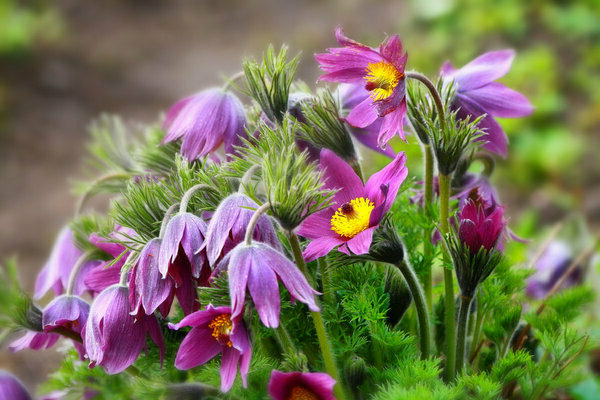
Flower lumbago: photo
Any soil is suitable for lumbago, but not very wet. The land should be water-permeable and fertile. Of course, it is worth getting rid of the weeds. The earth must be full of nutrients.
Landing lumbago
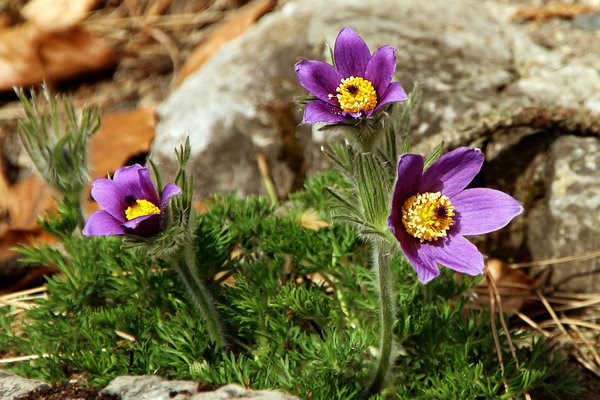
Flower lumbago: photo
Fertilize the soil before planting any plants. It can be compost, humus or manure, which is great as a fertilizer. It is worth remembering that the lumbago has long roots and processing should be carried out taking into account this feature.
You can transfer lumbago in early spring. After planting the plant, for the first month it is worth taking care of it, monitoring and watering it.It is also better not to transplant from it, to immediately plant it in a well-thought-out place and not disturb then with transplants. If you already decided to dig, then you need to rake in deep so as not to injure the roots.
Shooting care
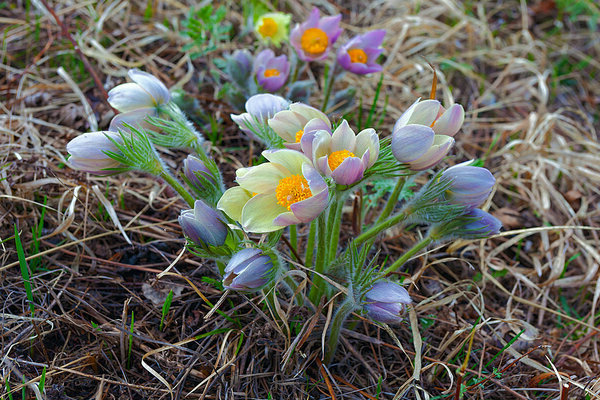
Flower lumbago: photo
Shots do not require any special care, they are not capricious and easy to clean. They adapt well to almost any climate. Frequent watering is needed only in case of drought; in normal weather, they do not require frequent watering. Top dressing is also encouraged before flowering. Fertilizers must be applied without nitrogen, this point is worth remembering.
Wintering lumbago
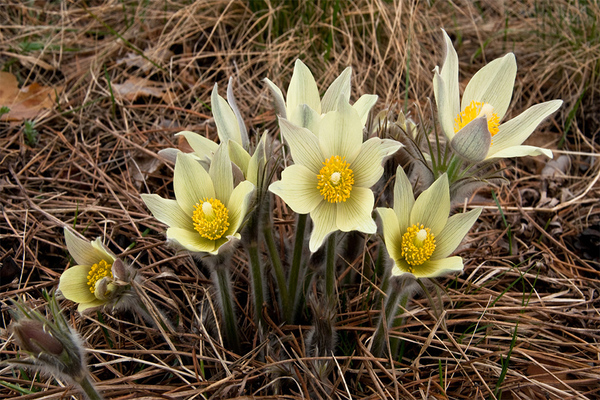
Flower lumbago: photo
In winter, no problems should arise. Lumbago tolerates winter well. However, if the lumbago is a year old, they need to be covered before winter, since they are still weak for winter. In other cases, they do not require special training.
Pest and disease control
Everyone was lucky here. Shoots are very resistant to diseases and pests. Even with poor care, this is unlikely to threaten them. So you shouldn't be afraid for them in this regard.
Lumbago: flower reproduction
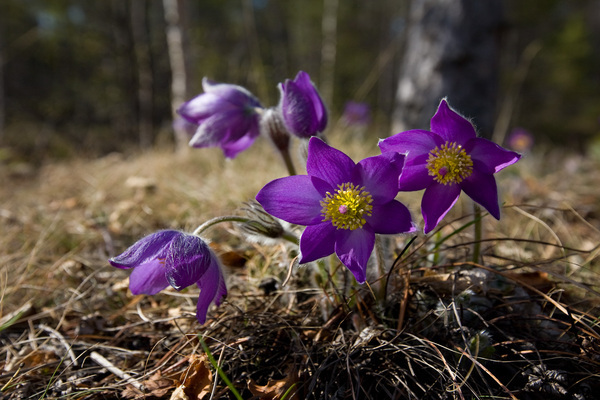
Flower lumbago: photo
Breeding method in seed lumbago. For them, this is the most suitable method, since it was said above that they cannot tolerate transplantation. This is the perfect method for wildlife too. Most lumbago bloom in the second year after sowing, but there are exceptions that bloom in the seventh year, but there are few of them.
When sowing the lumbago, you need to remember that they do not tolerate transplants, the lumbago simply will not survive. It is best to plant them in the spring, although some plant them in the summer, but this is a risky step. Sowing shot seeds into the soil is no different from sowing other seeds, the strategy and rules are the same. They are pressed into the ground, keeping a distance, poured with water and ready. It is worth remembering that the arrow will bloom only in the second year of planting.
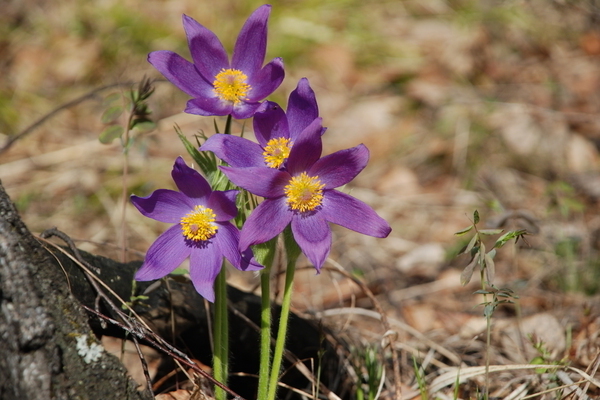
Flower lumbago: photo


